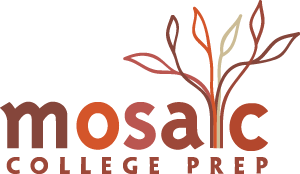Did you thrive at a high school that promoted group work, experiential learning and student involvement in curricular decisions? Or did you attend a more traditional high school and wish you had more flexibility in what you studied? Or perhaps you happily attend a more traditional high school but now want more self-directed learning opportunities?
 As you build a list of schools with the right fit and consider features such as location, size, admissions statistics, extracurriculars, affordability, etc., another element to keep in mind is what kind of education the school provides. Regardless of the type of high school you attended, consider whether non-traditional college curriculums are right for you.
As you build a list of schools with the right fit and consider features such as location, size, admissions statistics, extracurriculars, affordability, etc., another element to keep in mind is what kind of education the school provides. Regardless of the type of high school you attended, consider whether non-traditional college curriculums are right for you.
Many colleges and universities require students to fulfill specific course requirements, which can range from a single required course for all students to a required number of “distribution requirements,” in which students must choose courses in several areas (such as humanities, natural sciences, social sciences, foreign languages.) It is quite common for students to have to choose a major and then follow a prescribed sequence of courses to complete their major.
 There are many schools, however, where students are given quite a bit of autonomy in crafting their courses of study, allowing them to explore non-traditional college curriculums. For instance, at Bennington College in Vermont, students design their own course of study, working closely with faculty advisors. After exploring broad areas of study in their first year, in their second year, students submit a Plan Proposal detailing how they intend to “dive into a particular discipline, a cluster of disciplines, or a question.” Students at Bennington also participate in yearly Field Work Terms for the equivalent of six weeks a year, choosing where to obtain practical knowledge as part of their learning experience.
There are many schools, however, where students are given quite a bit of autonomy in crafting their courses of study, allowing them to explore non-traditional college curriculums. For instance, at Bennington College in Vermont, students design their own course of study, working closely with faculty advisors. After exploring broad areas of study in their first year, in their second year, students submit a Plan Proposal detailing how they intend to “dive into a particular discipline, a cluster of disciplines, or a question.” Students at Bennington also participate in yearly Field Work Terms for the equivalent of six weeks a year, choosing where to obtain practical knowledge as part of their learning experience.
 On the other side of the country, new students at The Evergreen State College in Washington state enroll in single 12-16 credit “Programs” that integrate different disciplines on a specific theme, rather than individual courses. As they progress through their education, they find areas of “emphasis” that they would like to study and design their own degrees, pulling from courses from across a wide range of disciplines. So instead of choosing a major first and then selecting courses within that major, students choose what course they want to take, and then mold a major around those interests.
On the other side of the country, new students at The Evergreen State College in Washington state enroll in single 12-16 credit “Programs” that integrate different disciplines on a specific theme, rather than individual courses. As they progress through their education, they find areas of “emphasis” that they would like to study and design their own degrees, pulling from courses from across a wide range of disciplines. So instead of choosing a major first and then selecting courses within that major, students choose what course they want to take, and then mold a major around those interests.
Alternative approaches to education can also be found in very structured programs. At St. Johns College, with locations in New Mexico and Maryland, there are no majors. Instead, students all follow a Great Books curriculum and all classes are taught in small seminars.
There is a wonderful resource, Colleges That Change Lives, that provides comprehensive descriptions of 45 colleges that provide “personalized and transformative” approaches to education. You could think about schools on this list, along with some others, as places that encourage students to have a starring role in transforming their own lives through active participation in their education.
For more information about finding the right fit in a college and building your own college application list, you can check out our blogs on Building a College List (Part I and Part II), College Confusion: Rising Seniors & the College Search, and Thinking About Fit When Applying to College. For information specific to researching colleges during “Safer at Home”, you read our top 10 Ways to Research Colleges When You Can’t Visit.
If you are ready to start building your college list, don’t hesitate to reach out to us! Our counselors are able to help you create a list that encompasses both who you are and the person you want to be!

